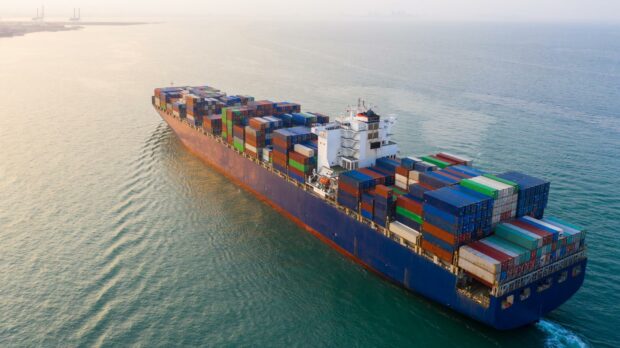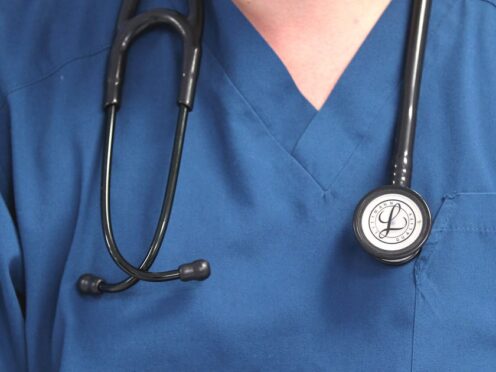Chris Kerr, partner at law firm Harper Macleod and leader of the firm’s practice in the Highlands, Islands and Moray, explains how Scotland’s marine economy can be sustainable and secure in terms of future energy provision.
-
Some Press and Journal online content is funded by outside parties. The revenue from this helps to sustain our independent news gathering. You will always know if you are reading paid-for material as it will be clearly labelled as “Partnership” on the site and on social media channels.
This can take two different forms.
“Presented by”
This means the content has been paid for and produced by the named advertiser.
“In partnership with”
This means the content has been paid for and approved by the named advertiser but written and edited by our own commercial content team.
Following COP26 the world was buoyed by a global intention to work harder towards achieving ambitious, yet necessary, net zero emissions.
Less than six months on the world feels a very different place. The discussion has quickly moved from one of energy sustainability, to one of energy security.
However, despite the glare of global political-economic factors, we must not lose sight of the opportunity Scotland has, and in particular that of our marine economy, to be sustainable and secure in terms of our future energy provision.
Such is the importance of our marine economy that during the height of the pandemic, a pathway was set out to harness the opportunity afforded to us by our waters. In the Scottish Government’s Programme for Government 2021/22 – released in September last year – the importance and potential for our marine economy could not have been made clearer:
Alongside our natural economy, a clear opportunity for recovery and renewal in Scotland lies in our marine areas. Six times the size of Scotland’s land mass, our rich marine natural capital has the potential to help drive Scotland’s green recovery while contributing to often fragile local communities.
Albeit delayed from the previous year while the pandemic took obvious precedence, the Scottish Government set out a commitment to develop a Blue Economy Strategy and delivery plan with sustainable growth of the marine economy underpinned by environmental protection.
Since that commitment was made we’ve seen two further major developments.
Firstly, in January Crown Estate Scotland announced the outcome of the application process for ScotWind leasing, Scotland’s first offshore wind leasing in more than 10 years.
In total 17 projects were chosen, following nearly 75 applications. Around £700m will be paid by those applications for the rights to develop specific areas of the Scottish seabed, with fees passed to the Scottish Government.
It’s therefore clear that offshore wind is a significant and viable sustainable energy option when it comes to Scotland’s net zero targets. However, it is important that all communities which are impacted by this form of production, share the benefits.
Secondly, and following months of negotiations between UK and Scottish governments, agreement was reached in February in respect of the establishment of two green freeports in Scotland. The agreement will see £52m seed funding invested into the establishment and development of the green freeports in Scotland, in line with the funding commitments offered to freeports across England.

In Scotland the newly-agreed zones will be referred to as green freeports, as a reflection of the Scottish Government’s distinctive net zero targets. As a result, and amongst other commitments, interested bidders will be required to demonstrate their contribution to a “just transition to net-zero emissions by 2045, delivering net-zero benefits and creating new green jobs”.
In terms of when we are likely to see such sites operational in Scotland, it is thought that spring 2023 may be achievable. The bidding process will commence this spring, and is due to close later in the summer, with bids being jointly assessed by the Scottish and UK governments.
Underpinning both of these announcements was industry body Scottish Renewables’ recent Supply Chain Impact Statement which suggests Scotland’s renewable energy sector could triple in size by 2030.
So while we move from one period of uncertainty to another, we should focus on the opportunities which lie within our marine economy and the key issues relevant to everyone working in, or connected to, this area of our natural capital.
Marine Economy Week is a week-long series of virtual events hosted by Harper Macleod examining all aspects of Scotland’s diverse maritime and marine sectors. The marine economy is a fundamental part of Scotland’s natural capital, as well as having the ability to play a large role in the efforts to tackle climate change. Until recently, the scale of the sector has been overlooked given the diversity of its enterprises and stakeholders. However, it contributes hugely to both local and national economies and has phenomenal growth potential in Scotland.
Over five days, Harper Macleod’s specialists will be joined by industry experts for a daily lunchtime webinar to examine an array of crucial issues facing all parts of the sector, covering areas such as innovation & technology, people & skills, ports & harbours, and marine energy & renewables.
We hope you can join us.
Visit Harper Macleod website for more information.










